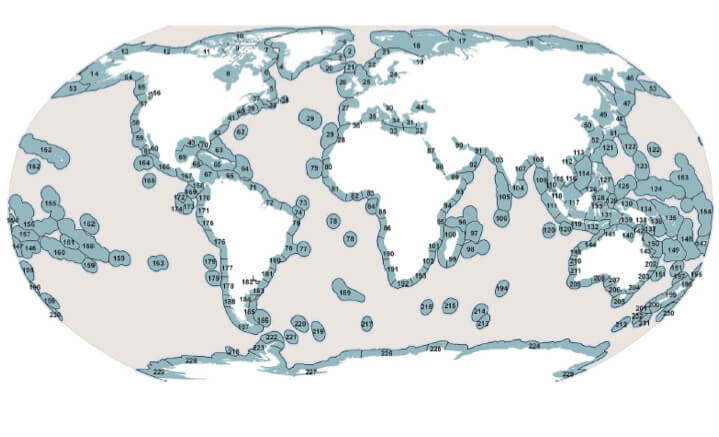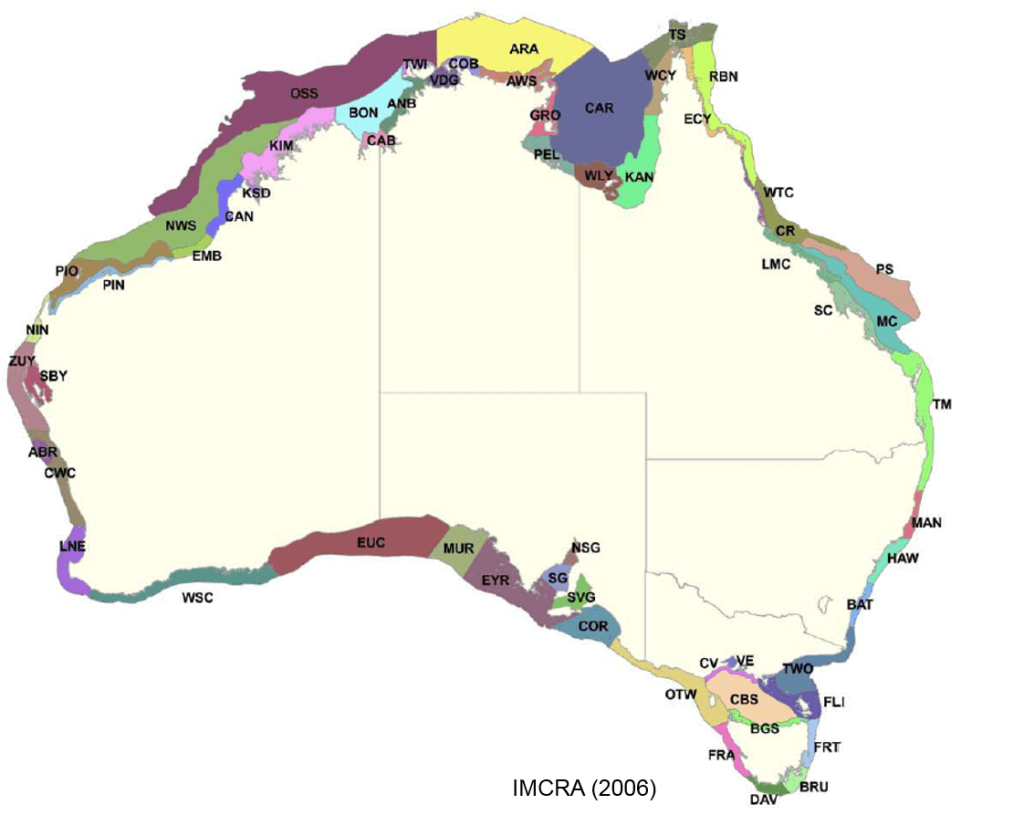Biogeographic Setting uses the CMECS structure based on the classification of marine ecological regions of the world (MEOW) by Spalding et al. (2007) (PDF, 634kB).

Hierarchy
There are three levels to the MEOW scheme: realm, province and ecoregion. A further three levels were added to document local bioregionalisation schema that are subordinate to the MEOW scheme. In the Australian context, these enable classification according to the IMCRA province (PDF, 365kB) and IMCRA bioregion (PDF, 167kB), as well as smaller discrete geographical units, such as particular coastline segments. For Australia, the IMCRA province is at a similar scale as the MEOW ecoregions and IMCRA bioregion is not well nested within the IMCRA province level. These were nested beneath the MEOW ecoregion level to provide linkage between the local and global contexts.
MEOW Realm
MEOW Province
MEOW Ecoregion
Local province
Local bioregion
Local bio-unit
An expandable tree of the world’s continental shelf marine ecoregions and local Australian bioregions can be explored here:
[json – MEOW – marine ecoregions of the world]
The present MEOW scheme does not encompass the major ocean basins. Existing or new schema can be readily fitted to CBiCS in the future.
Australian Context
There are three biogeographic realms in Australasia:
- Central Indo-Pacific
- Temperate Australasia
- Southern Ocean
Biogeographic provinces nested within the Temperate Australasian realm are:
- East Central Australian Shelf
- Southeast Australian Shelf
- Southwest Australian Shelf
- West Central Australian Shelf
Ecoregions nested within the Southeast Australian Shelf are:
- Cape Howe
- Bassian
- Western Bassian

CBiCS Biounits
CBiCS bio-units delineate segments within bioregions that have distinctive physiographic properties. These include embayments, promontories and coastline segments with a particular wave climate and are generally at the scale of kilometres to tens of kilometres. An example of a hierarchy leading to local bio-units in Southeast Australian Shelf is illustrated below.
Biogeographic Hierarchy Explorer
The biogeographic setting hierarchy can be explored by clicking here.

